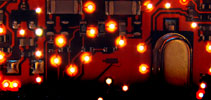

Any successful CCTV/electronic surveillance installation starts with a decent site survey and a means to understand not only the existing end user requirement but also possible future requirements.
Although this topic has been covered before and forms part of any installer or integration company's daily activities, I thought it a good idea to revise some of the basics that need to be applied.
Keep in mind the following initial questions that need to be addressed by the end user in conjunction with the installer:
* Why does the end-user want a CCTV system and what are the objectives?
* Precisely what problems will be addressed by the system?
* How does the system merge with other controls and processes that the client might have in place or will perhaps have to put in place?
* Does the system fit into the culture of the organisation where it is going to be utilised?
Most end-users would be thinking of using the system as a deterrent against crime or perhaps a mechanism to facilitate auditing of specific events after they occur. In many instances the system will be used for monitoring of productivity and will therefore allow for additional controls and processes to be put in place by the organisation.
Whatever the application or requirement initially, the first golden rule with any site survey is that the capability of the system being proposed is expandable. Although the current requirement might be met with a 16CH DVR, you have to consider that this DVR should be capable of expanding either the amount of channels per DVR, be able to add more DVRs and control and monitor them from a central point or make the user aware of IP-based systems which are more easily expandable.
The rest of the site survey should consider the following points:
Environment
Is the environment metro, rural, residential, urban, suburban, marine, industrial etc...?
Are you close to the sea or any other natural or unnatural environment or conditions that require special equipment?
Is there an existing infrastructure to support cable installations or does it have to be created?
Cameras
Amount of cameras to be mounted now and possibly into the future?
Where will the cameras be mounted, for example hallways, parking lots, perimeter?
Are any extreme light conditions present, for example door entrance areas or backlight from a large window etc.?
Is day- and night-time recording and viewing a requirement?
Are lights present, and if so, do they use neon gas, halogen, etc?
Will cameras be colour or monochrome?
What are the angles of view required per camera?
Will camera housings need to be temperature controlled, vandal proof, or what type of material will it be made from?
Will cameras be indoor or outdoor?
Will cameras be wired or wireless?
If wireless, one should consider the following:
Line of sight.
Maximum distance from point to point.
Are any cell towers, wireless networks, power lines OR other structures present?
How many PTZ cameras will be present on the site?
If a PTZ is present ask the following:
Will it be wired or wireless?
What is the data protocol to be used?
What is the manufacturer's protocol to be used?
What control device will be used for the PTZ?
Power
Is electrical power available? If so, what type of power, ie, 110, 220, 24 V a.c. or 12 V d.c?
Are any of the following available or required?
Surge suppression.
Voltage regulator.
Lightning suppressor.
Cable
What is the maximum cable run distance?
Will you use conventional RG-type cable or perhaps CAT5 data type?
Should additional shielded cable be used for some runs?
Base equipment
Will a DVR, NVR or hybrid recording system be used?
How long does the user want footage to be kept on the recording system?
Does a need exist for archiving of footage for future retrieval?
Will any form of matrix be used?
Is there a need for special video transmission equipment?
Is there a need for multiplexers?
Will users require remote logon capability?
Will any form of text overlay be required?
The trick is then to match the client requirement to the client budget and ensure when commissioning of the system is complete that a transfer of knowledge in the form of physical training on the system is performed. This ensures that the hidden overhead associated with callbacks due to incompetence is reduced.
Happy surveying and selling!
Bernard Senekal is a director of SentronicsSD.
For more information contact Bernard Senekal, SentronicsSD, +27 (0)21 957 4505, [email protected], www.sentronics.co.za

© Technews Publishing (Pty) Ltd. | All Rights Reserved.